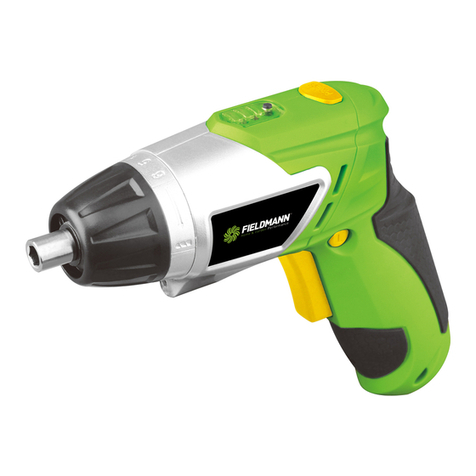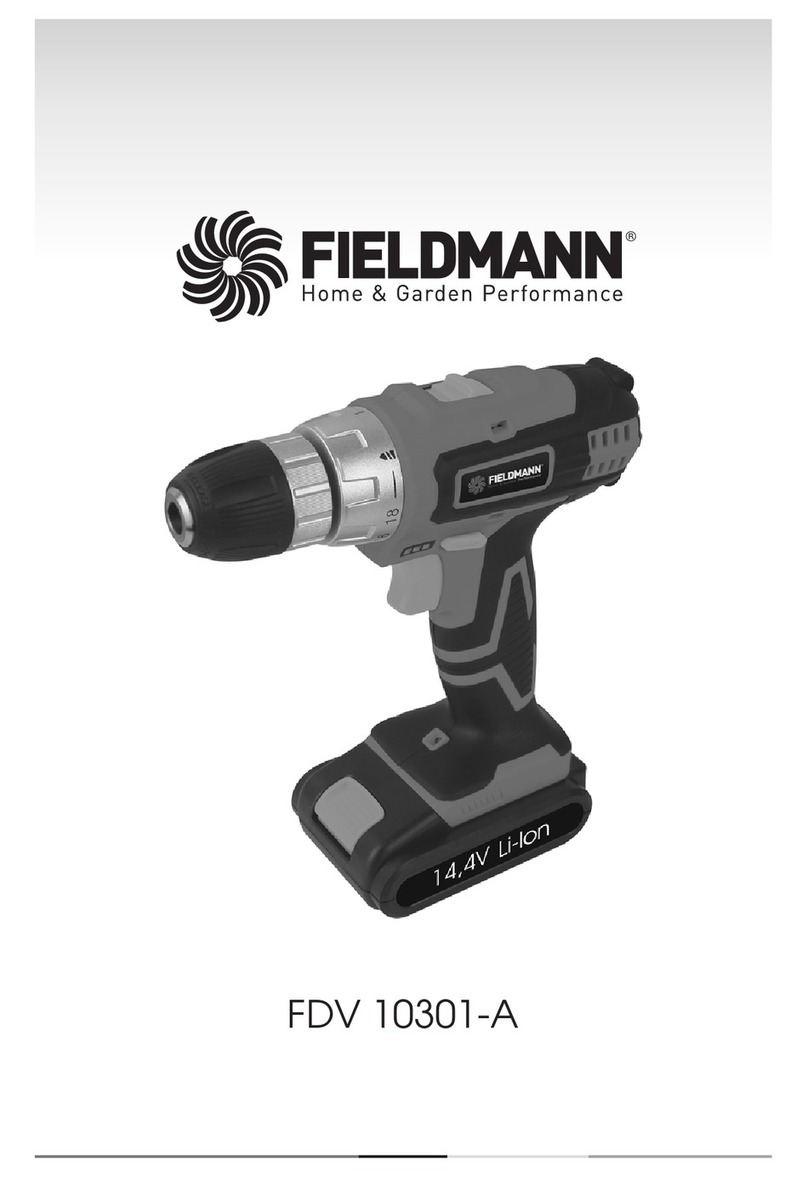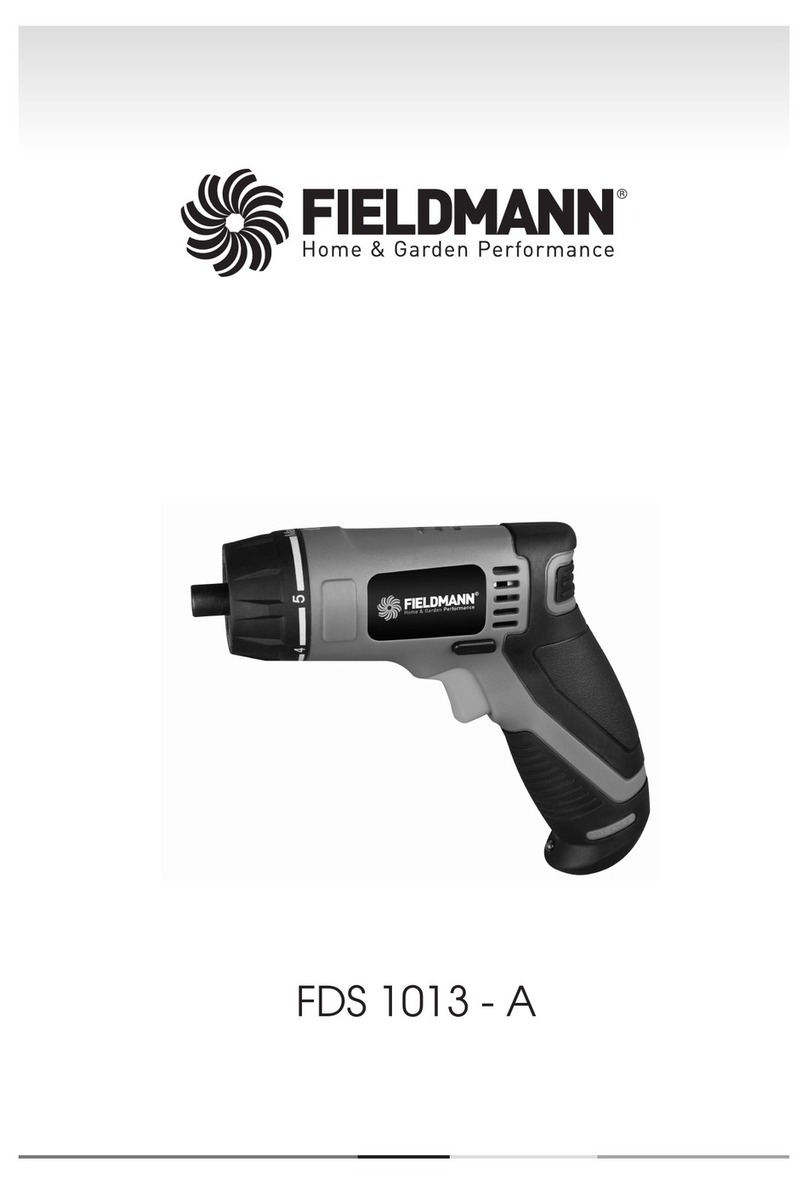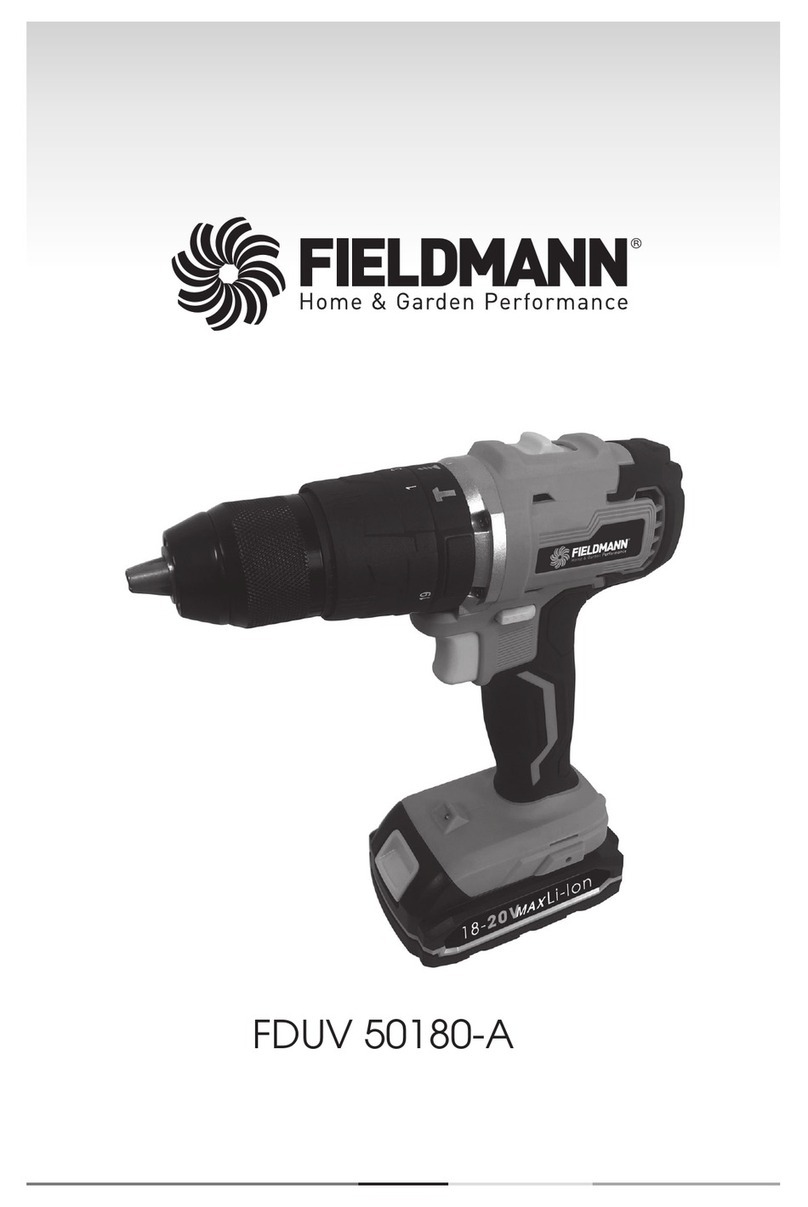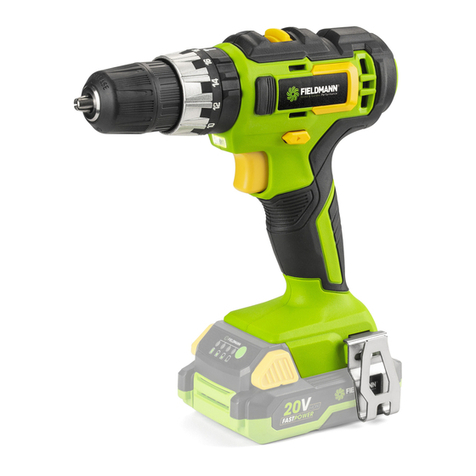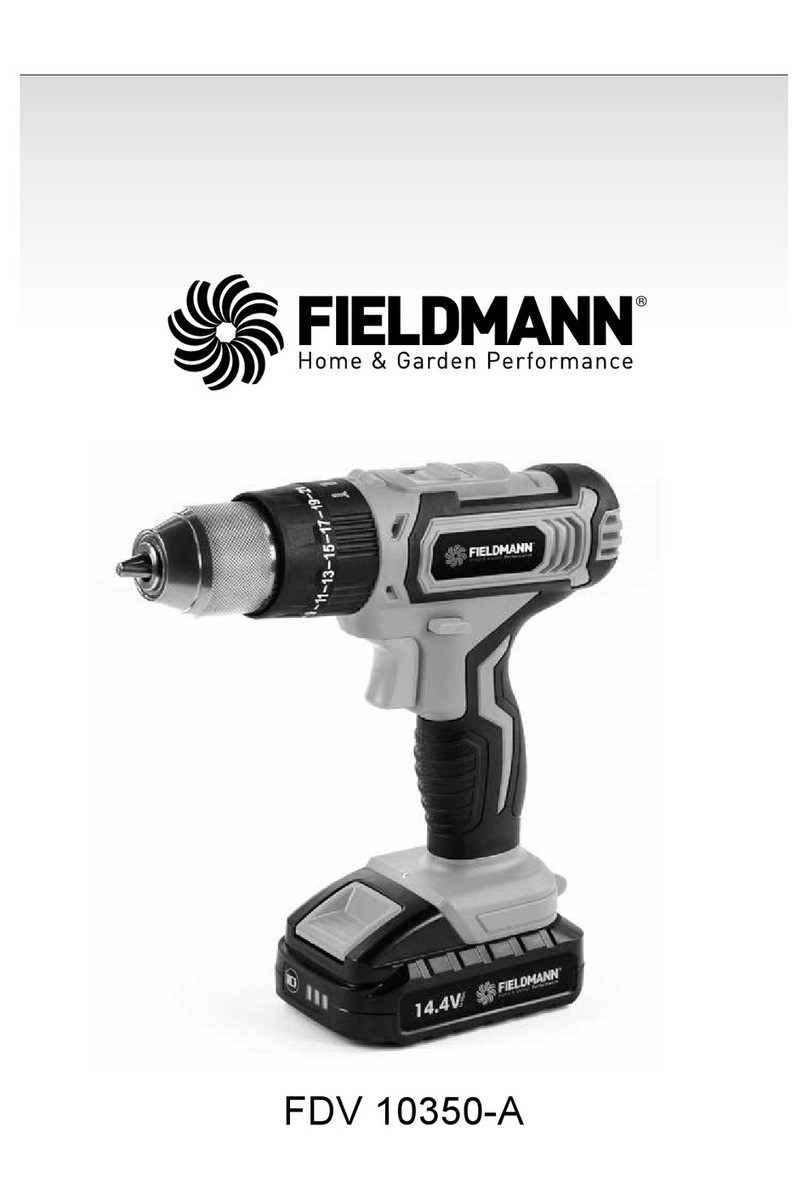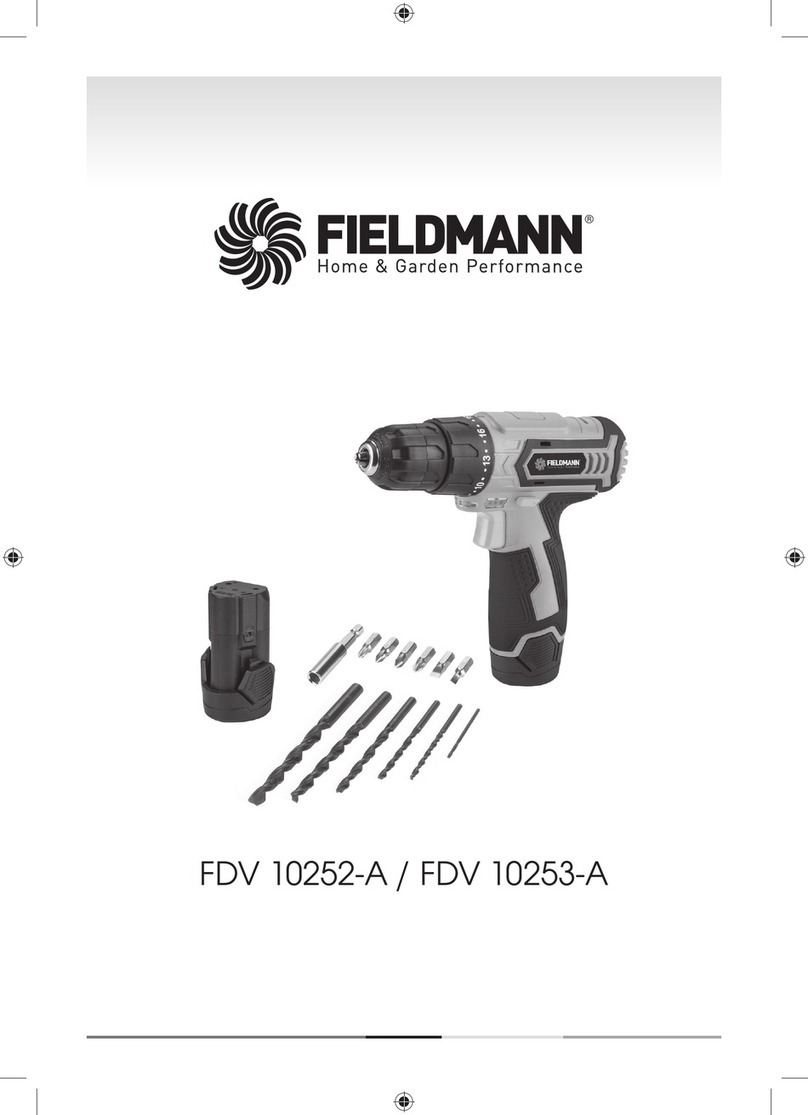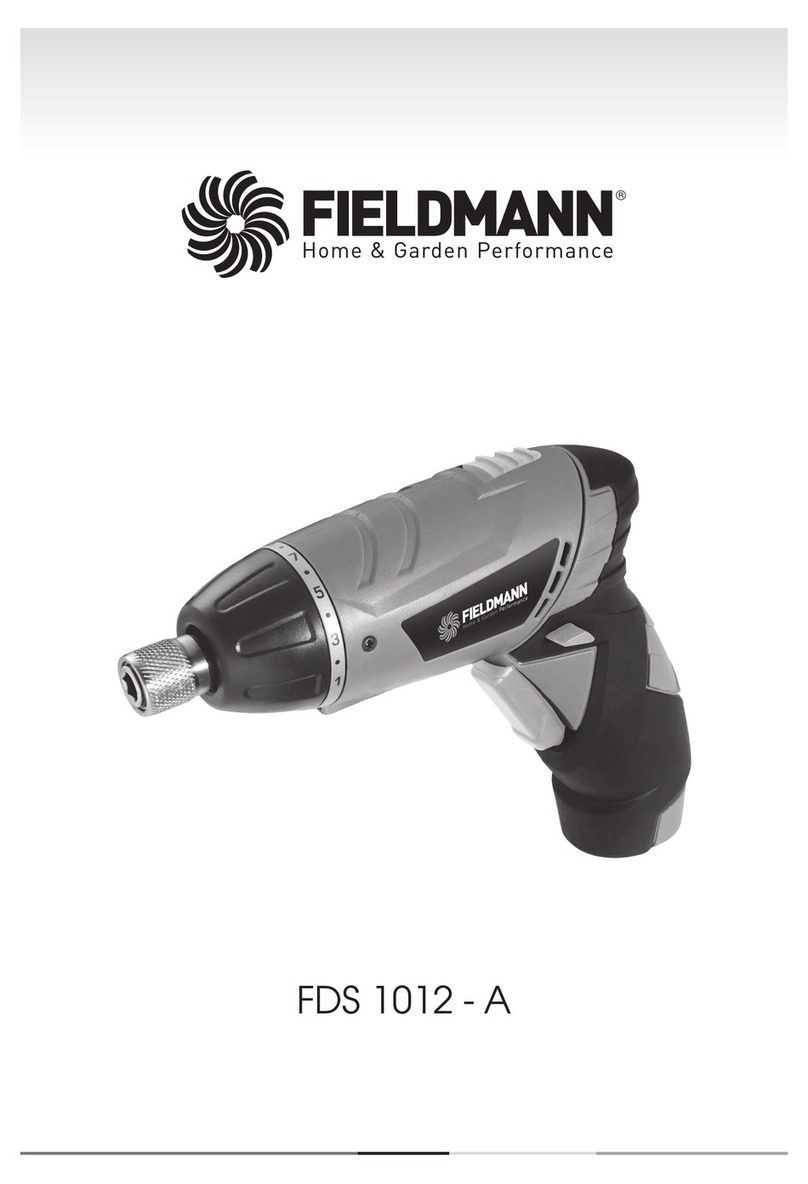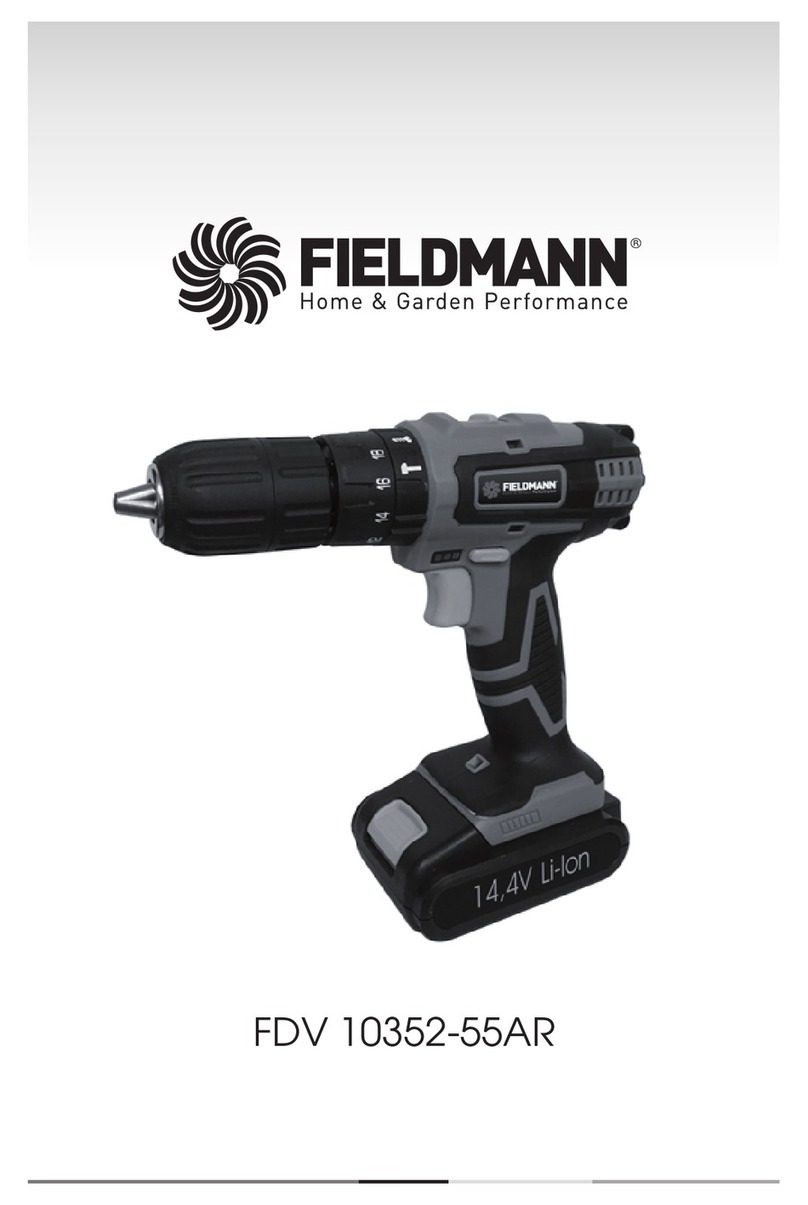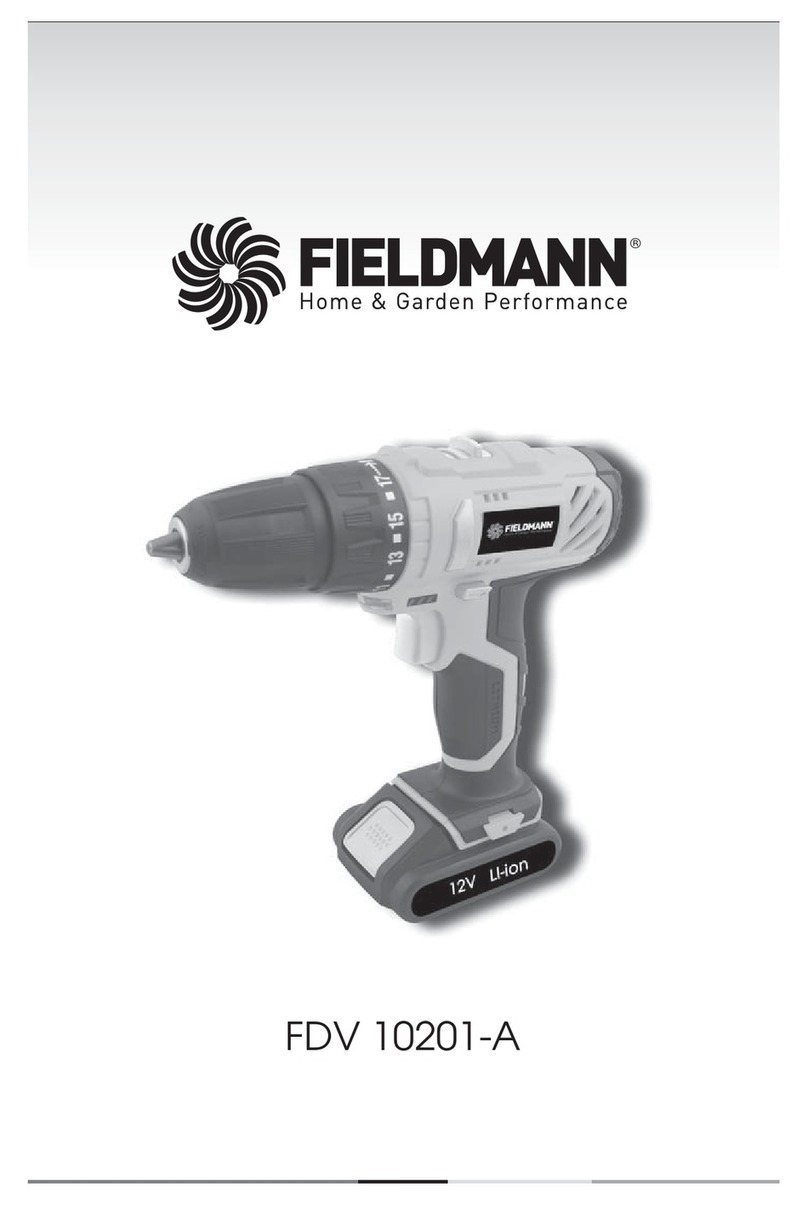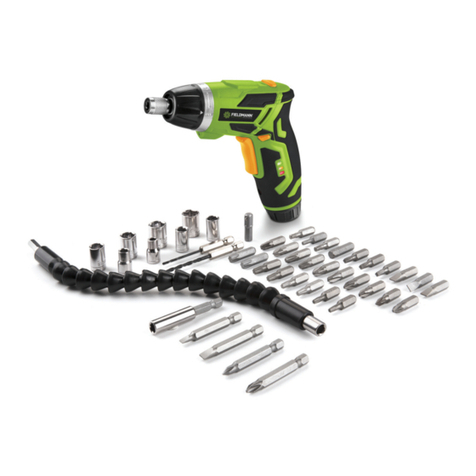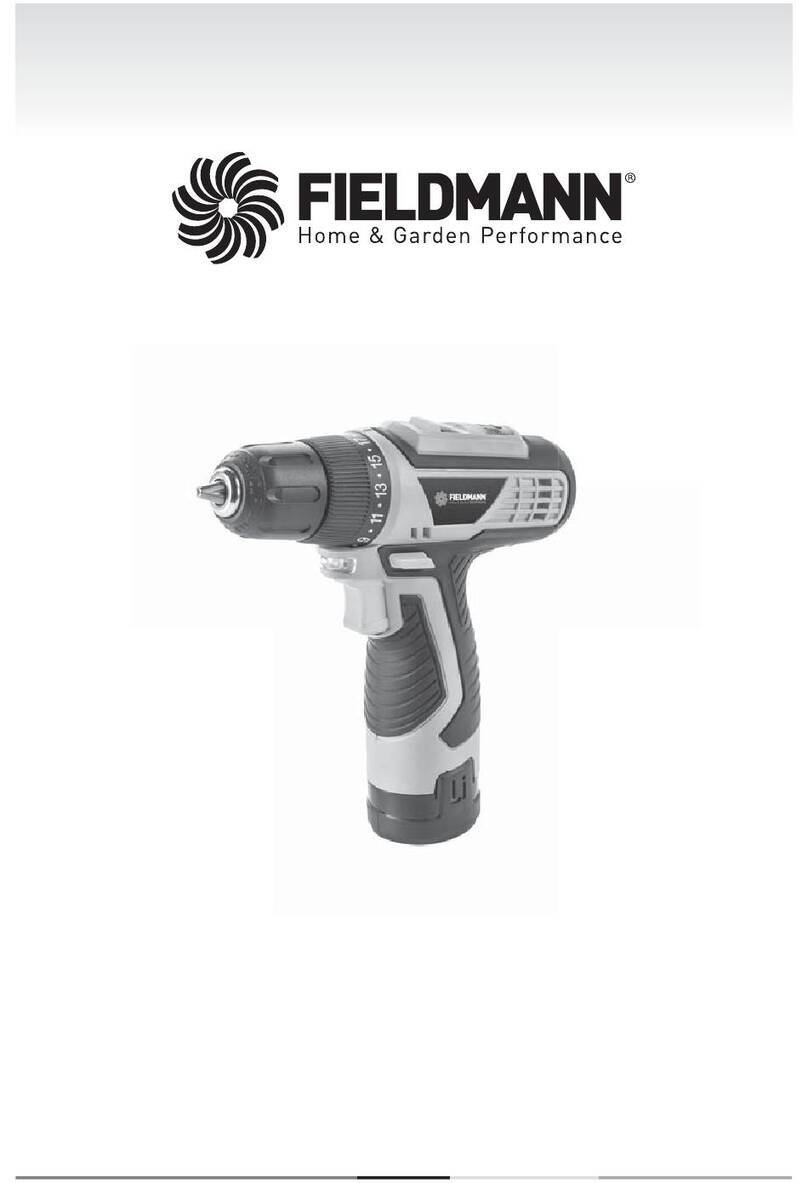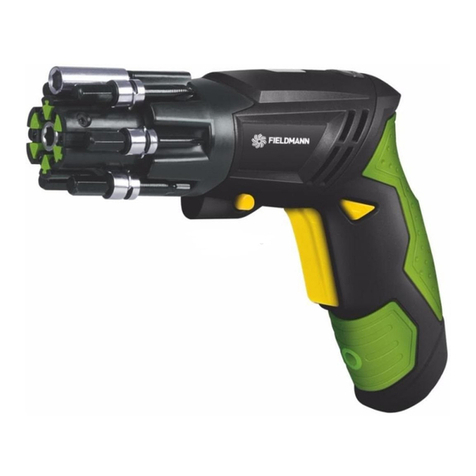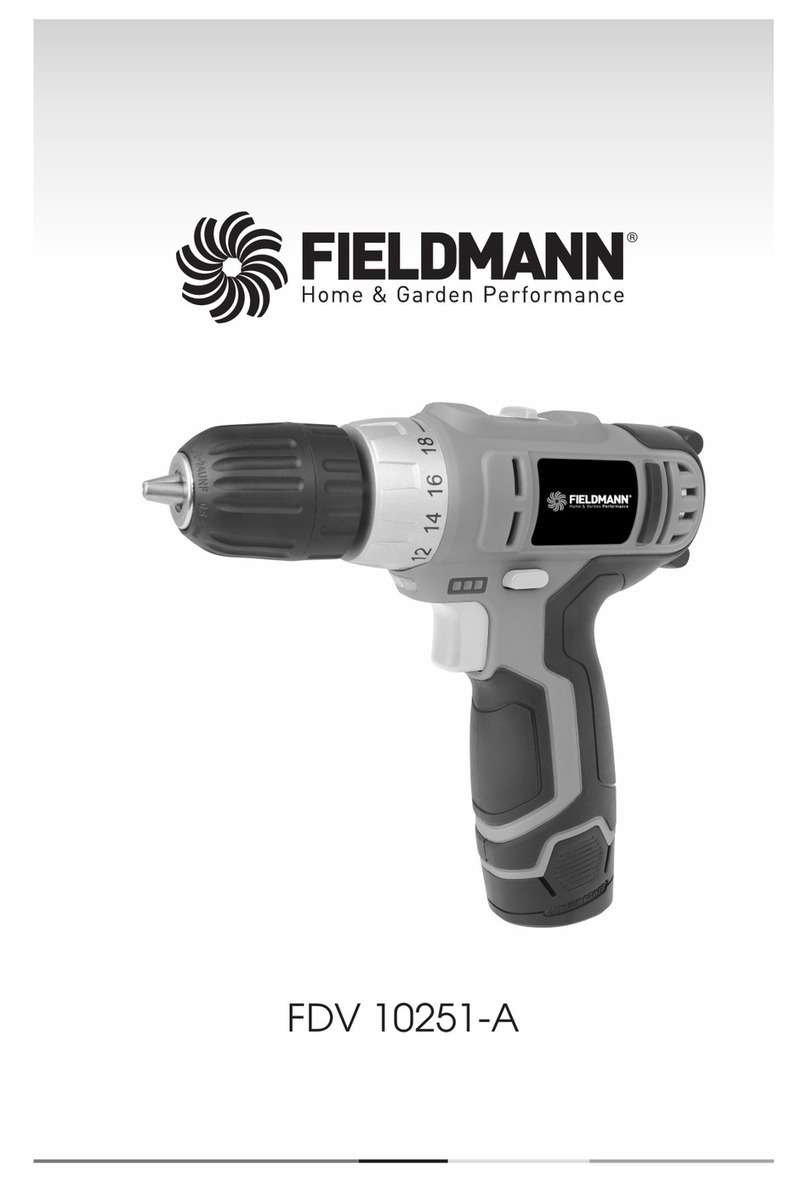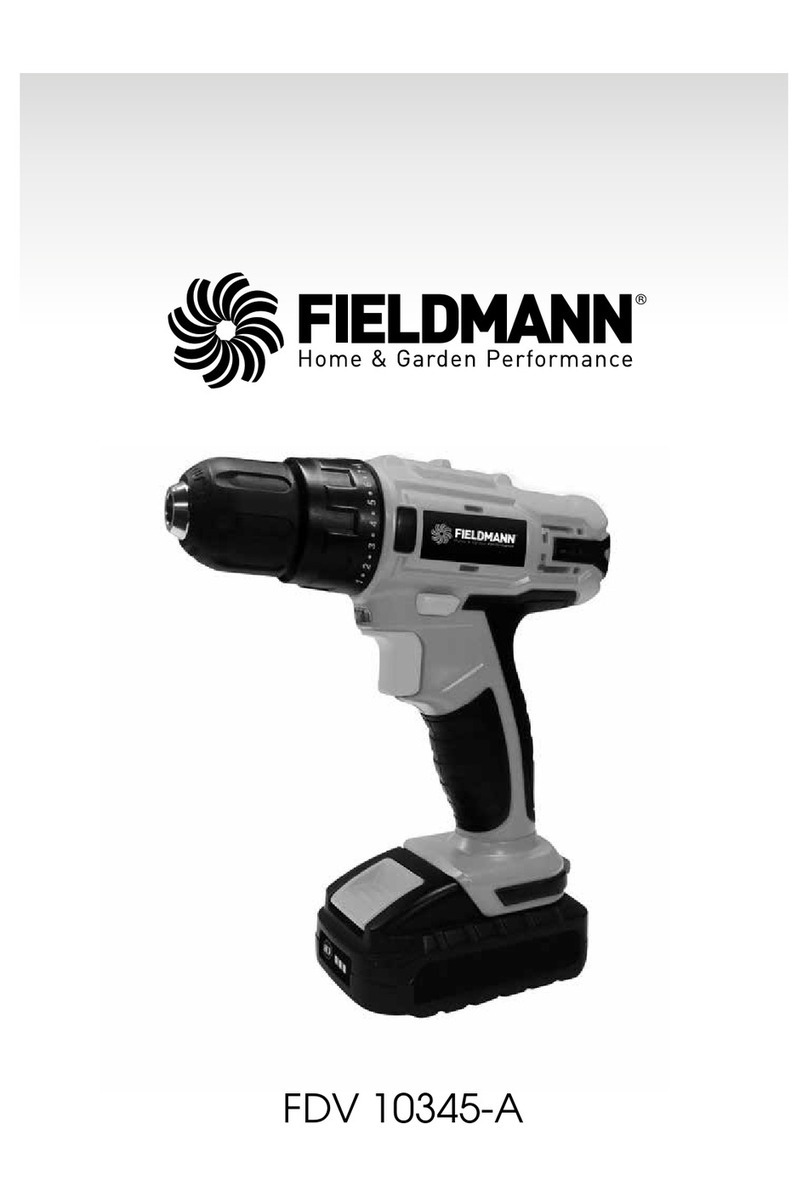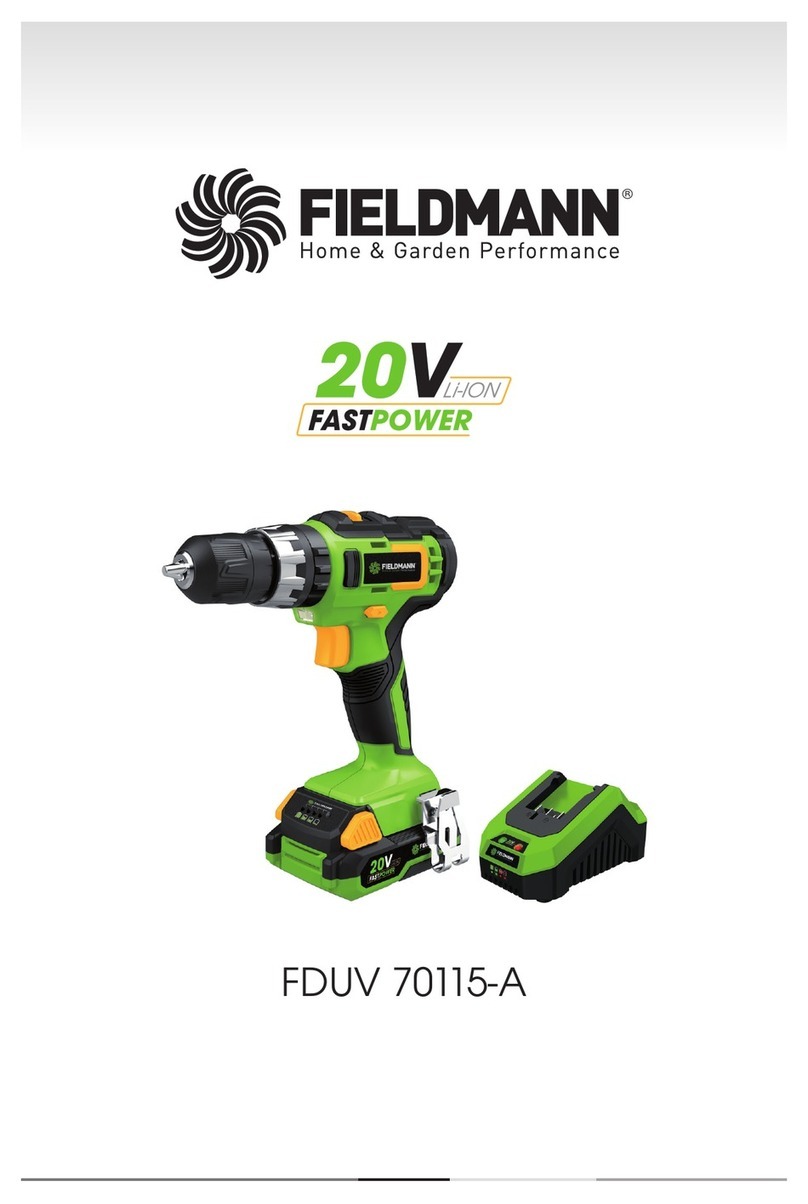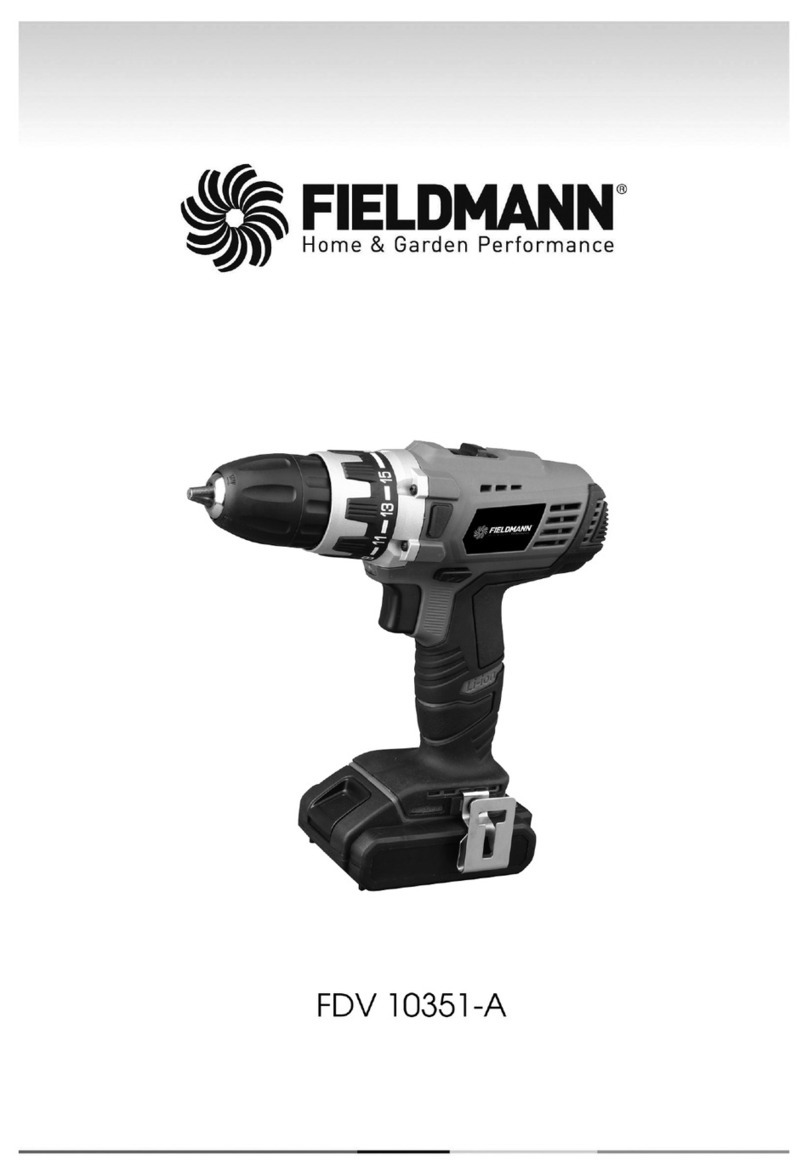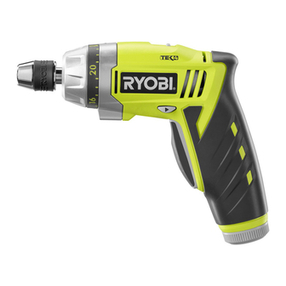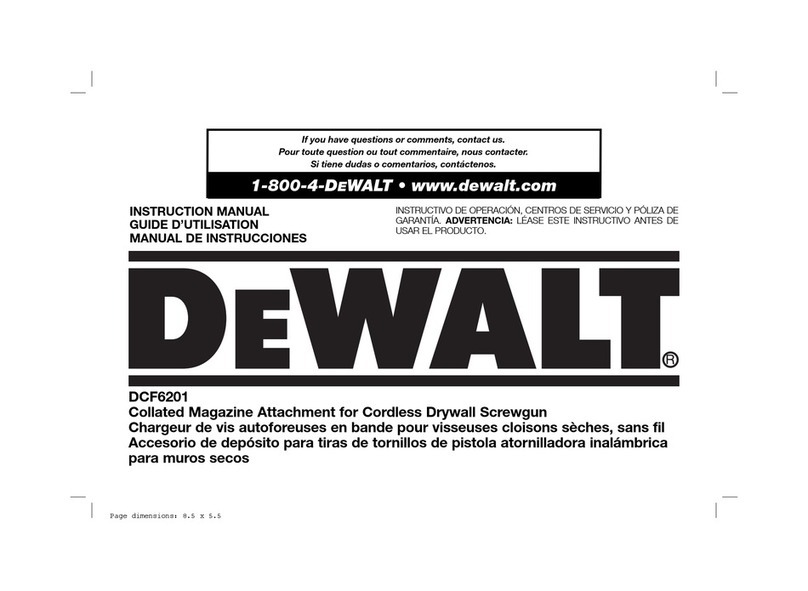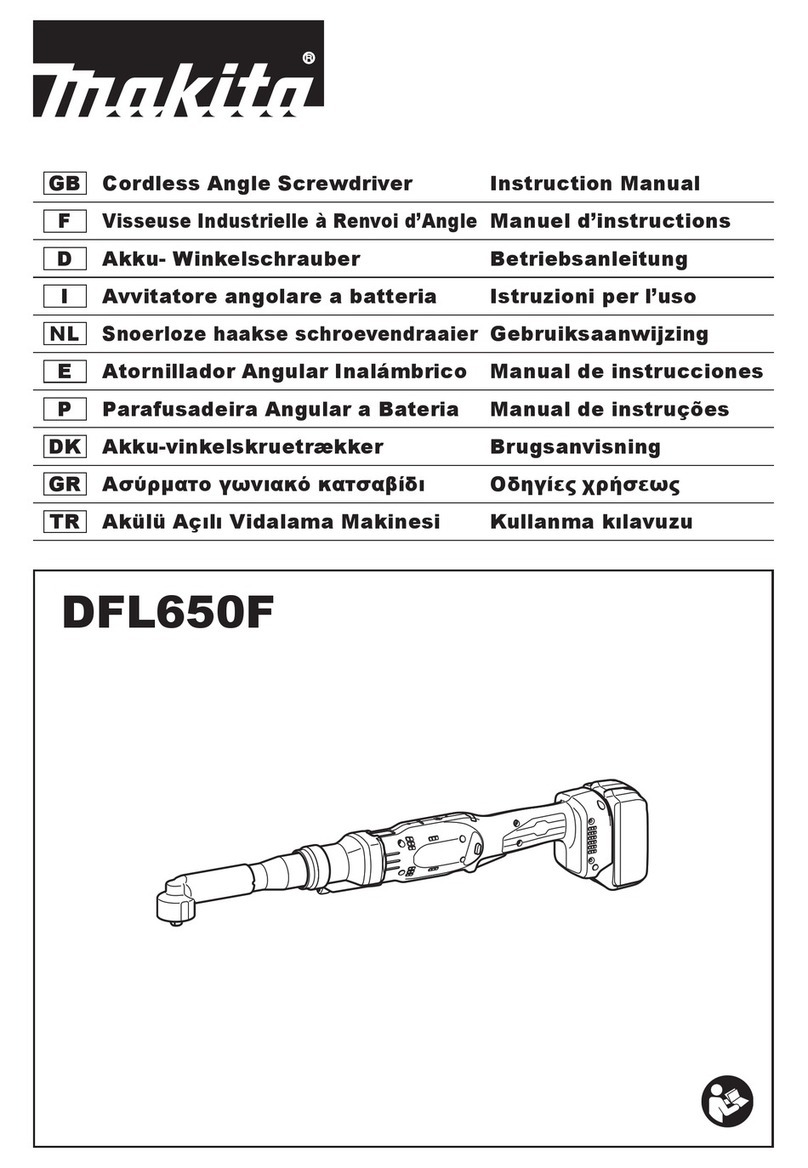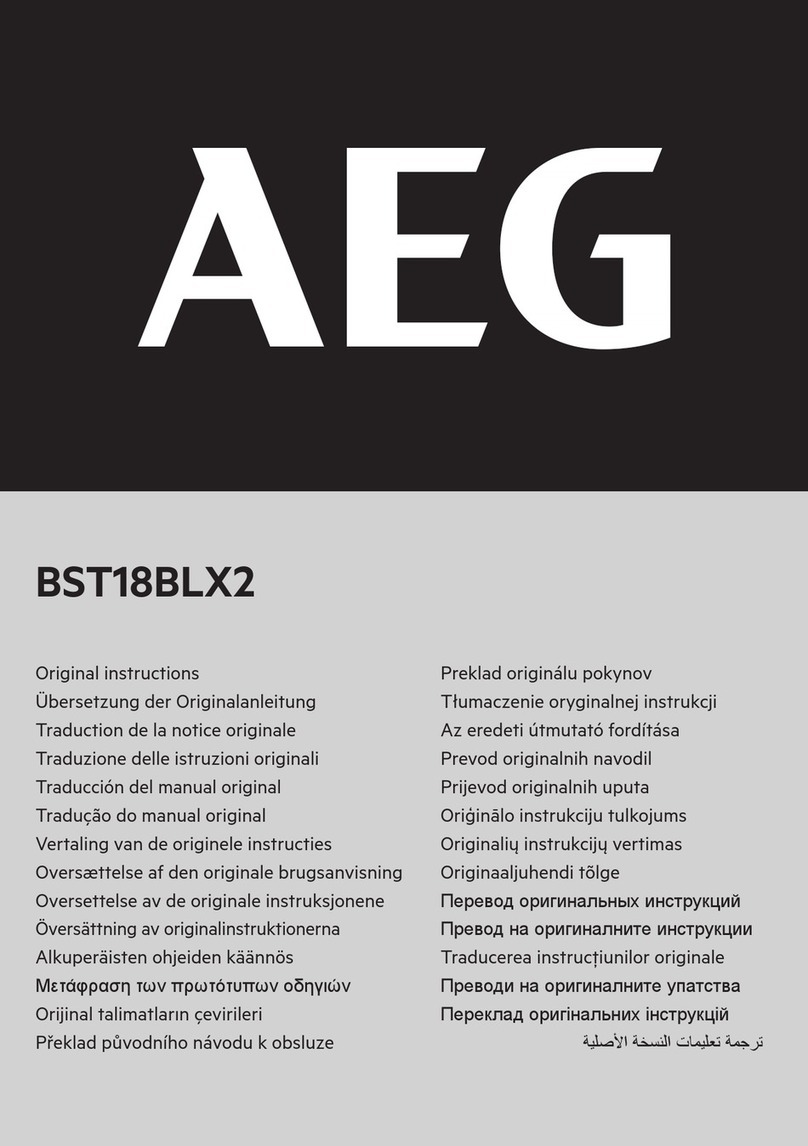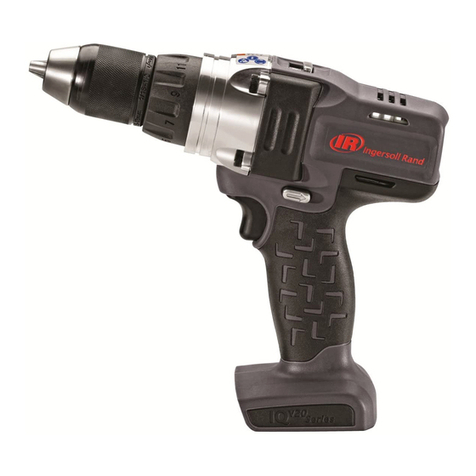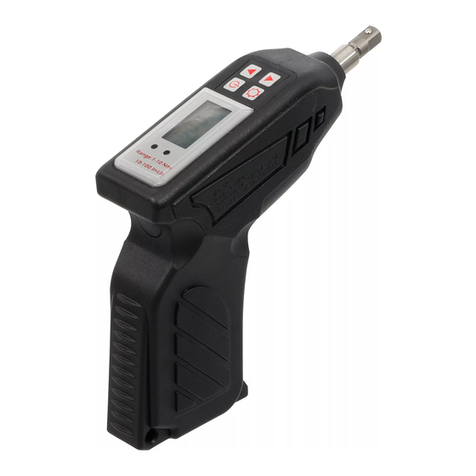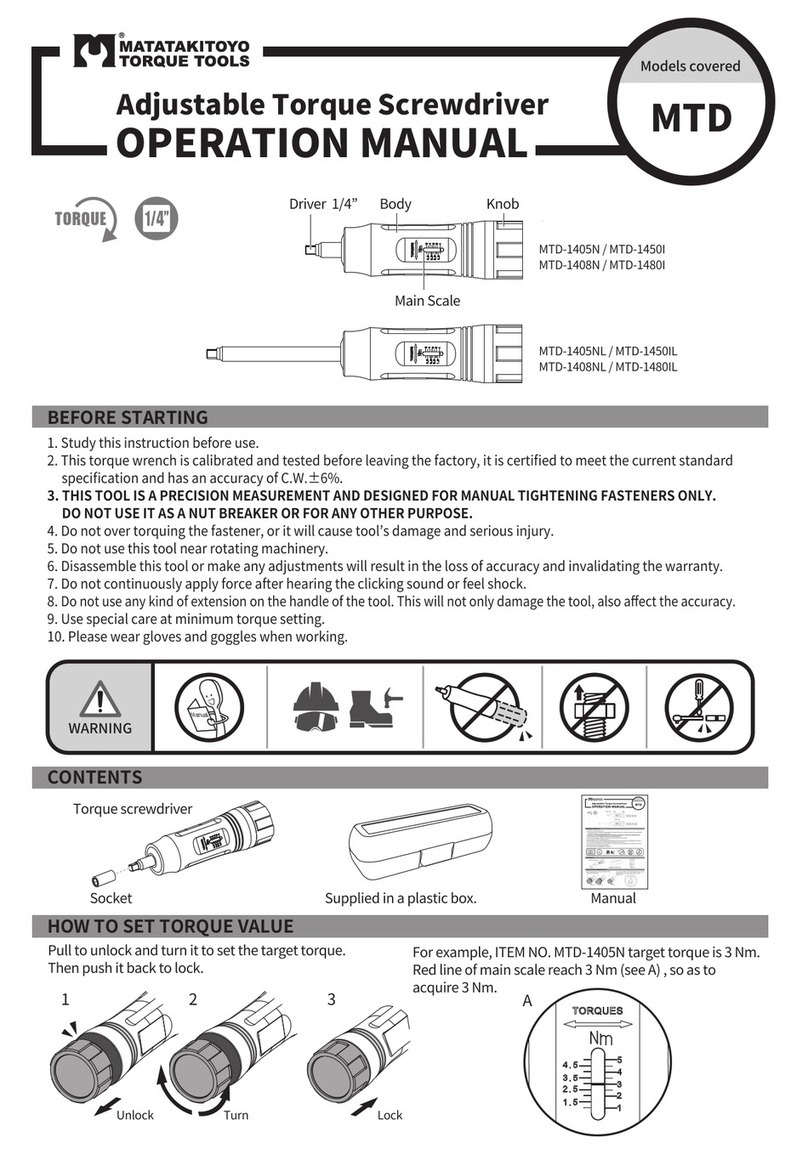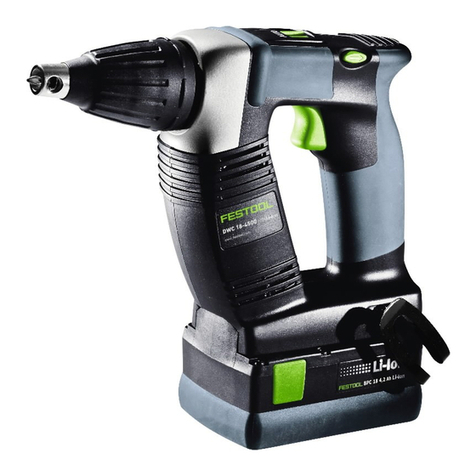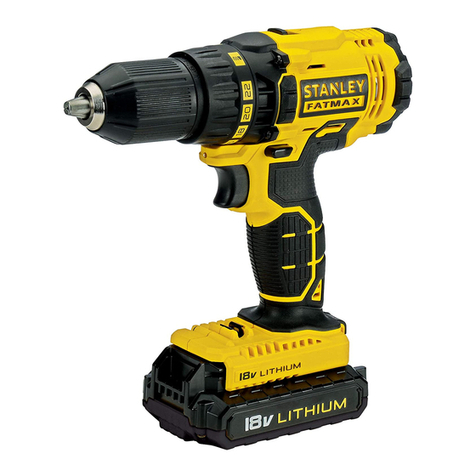
EN 10
FDUV 70215-0
Operation
Selecting Speed
The speed selector is on top of the motor housing.
Allow the tool to come to a complete stop before changing speeds. See “Applications” for recommended speeds
under various conditions.
1. For Low speed, push the speed selector to display “1”.
2. For High speed, push the speed selector to display “2”.
Using the Control Switch
The control switch may be set to three positions: forward, reverse and lock. Due to a lockout mechanism, the
control switch can only be adjusted when the ON/OFF switch is not pressed. Always allow the motor to come to
a complete stop before using the control switch.
For forward (clockwise) rotation, push in the control switch from the
right side of the tool. Check the direction of rotation before use.
For reverse (counterclockwise) rotation, push in the control switch from
the left side of the tool. Check direction of rotation before use.
Forward Reverse
Lock
Push to
CENTER
To lock the trigger, push the control switch to the center position. The trigger will not work while the control switch
is in the center locked position. Always lock the trigger or remove the battery pack before performing mainte-
nance, changing accessories, storing the tool and any time the tool is not in use.
WARNING!
To reduce the risk of injury, always hold or brace securely.
Starting, Stopping and Controlling Speed
1. To start the tool, grasp the handles firmly and pull the trigger.
NOTE: An LED is turned on when the trigger is pulled.
2. To vary the speed, increase or decrease the pressure on the trigger. The further the trigger is pulled, the
greater the speed.
3. To stop the tool, release the trigger. Make sure the bit comes to a complete stop before laying the tool down.
Drilling
Place the bit on the work surface and apply firm pressure before starting. Too much pressure will slow the bit and
reduce drilling efficiency. Too little pressure will cause the bit to slide over the work area and dull the point of the
bit.
If the tool begins to stall, reduce pressure slightly to allow the bit to regain speed. If the bit binds, reverse the motor
to free the bit from the workpiece.

